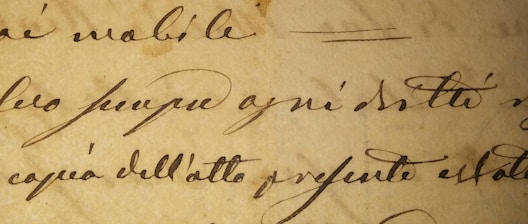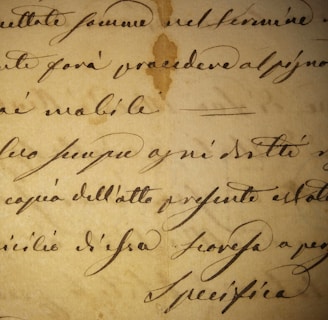The Art of Epistolary Writing: Crafting Stories through Letters
Bibliotheca Exotica
3 min read


The Epistolary Format: A Unique Way to Craft Compelling Stories
When it comes to storytelling, there are countless formats and techniques that authors can employ to captivate readers. One such format that has stood the test of time is epistolary writing. Epistolary novels, composed entirely or primarily of letters, diary entries, or other documents, offer a unique and intimate way to build plots and develop characters. In this blog post, we will dive into the art of epistolary writing, exploring how this format can be used to craft compelling stories that resonate with readers.
The Power of Intimacy: Connecting with Readers through Letters
One of the greatest strengths of epistolary writing lies in its ability to create a deep sense of intimacy between the characters and the readers. By presenting the story through personal correspondence, the reader is granted access to the characters' innermost thoughts, emotions, and experiences. This intimate connection allows readers to form a strong bond with the characters, immersing themselves in their lives and becoming emotionally invested in their journeys.
As a writer, it is essential to capitalize on this unique opportunity to connect with readers. To do so, consider the following tips:
1. Develop Distinctive Voices for Each Character
Since the story is told through letters or other documents, it is crucial to establish distinct voices for each character. This will help readers differentiate between the various correspondents and immerse themselves in the world you've created. Pay attention to the character's background, education, and personality traits, and let these factors shape their writing style and tone.
2. Use the Epistolary Format to Reveal Secrets and Uncover Mysteries
One of the most effective ways to keep readers engaged in an epistolary novel is by using the format to reveal secrets and uncover mysteries. By strategically withholding information or presenting it through different perspectives, you can create a sense of suspense and intrigue that will keep readers eagerly turning the pages. Consider using letters that are intercepted, diary entries that are discovered, or even unsent correspondence that is later found.
3. Explore Multiple Viewpoints and Perspectives
Epistolary writing offers a unique opportunity to explore multiple viewpoints and perspectives within a single story. By presenting the narrative through different characters' letters or documents, you can provide readers with a more comprehensive understanding of the events and emotions at play. This multi-dimensional approach adds depth and complexity to the story, allowing readers to see the plot unfold from various angles.
Building Plot and Character Solely through Letters
One of the greatest challenges of writing an epistolary novel is building a compelling plot and well-rounded characters solely through letters or other documents. However, with careful planning and execution, it is entirely possible to create a rich and engaging story within this format. Here are some tips to help you achieve that:
1. Establish a Clear Story Arc
While the epistolary format may seem fragmented at first, it is crucial to establish a clear story arc that guides the narrative. Define the beginning, middle, and end of your story, and ensure that each letter or document contributes to the overall plot progression. Consider the pacing of the story and how the revelations and conflicts unfold through the correspondence.
2. Develop Dynamic and Evolving Characters
Character development is key in any form of storytelling, and it is particularly important in epistolary writing. Since you are limited to the characters' perspectives as presented through their letters, it is essential to show their growth, change, and evolution over time. Use the correspondence to reveal their inner struggles, conflicts, and desires, allowing readers to witness their transformation firsthand.
3. Utilize Supplementary Documents and Artifacts
While letters and diary entries are the primary vehicles for storytelling in epistolary writing, consider incorporating supplementary documents and artifacts to enhance the narrative. This could include newspaper clippings, telegrams, photographs, or even objects that hold symbolic significance. These additional elements can provide valuable context, deepen the reader's immersion, and add layers of meaning to the story.
The Enduring Appeal of Epistolary Writing
Epistolary writing has a timeless appeal that continues to captivate readers across generations. The format's ability to evoke emotion, create intimacy, and offer unique storytelling opportunities makes it a powerful tool for authors. By mastering the art of epistolary writing and crafting stories through letters, diary entries, or other documents, you can create narratives that resonate deeply with readers and leave a lasting impression.
So, the next time you embark on a writing journey, consider exploring the world of epistolary writing. Embrace the power of letters and the intimacy they bring, and allow your characters to tell their stories through the written word. The art of epistolary writing awaits, ready to transport your readers to a world of emotion, connection, and unforgettable storytelling.

